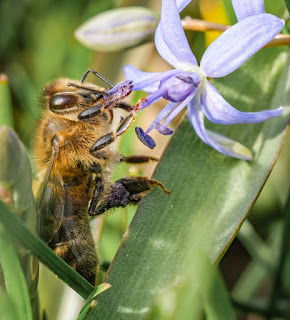These are taken with my pinhole camera - still amazes me how an image can be produced with just a pinprick in silver foil. I failed to get my hole quite central so diffraction occurs with the bright lights and there is a bit of distortion on the lower edges of the frame. The exposures in the church were around 60 seconds and outside 0.6 to 1.5 seconds.
Wednesday, March 3, 2021
Monday, March 1, 2021
Ash Die-Back and Woodland Birds
Hardwick Wood is one of East Anglia's Ancient woodlands and its Ash trees are suffering badly with Ash Dieback - the tell-tale white twigs can be seen in the woodland panorama with close ups to follow. The fungus Hymenoscyphus fraxineus causes the lethal disease and represents a substantial threat. It was detected in the UK for the first time in 2012 and is now very widespread. The fungus blocks water and nutrients moving in the tree's vascular system, causing a restriction in water movement that leads to a significant leaf loss, bark lesions and then the dieback in the crown of the tree itself (hence the name). The loss of the Ash trees will affect the wood - there will be fewer trees for the nesting Buzzards and Kites though hole-nesters such as the Tits, Woodpeckers, Nuthatches and Tree Creepers may gain temporarily
Saturday, February 27, 2021
Moon Set, Sun Rise
I went out early to catch the moon setting this morning and, as the moon reached the horizon, a fiery
sun rose opposite. Lovely colours in the sky and landscapes today, from soft pinks to bright yellows and oranges
Friday, February 26, 2021
Garden Birds
A lot of activity in the garden today with up to 6 goldfinches feeding on the various seed heads (so glad I haven't been tempted to clear these away yet). They were joined at the feeders by Longtailed Tits - now in pairs as breeding starts, Greenfinch, Starlings and, for the first time this year, a Siskin.
Wednesday, February 24, 2021
Bees, Ladybirds and Spring Bulbs
Reassuring to see large numbers of Honey Bees at work collecting pollen and nectar from the Anemones, Scilla and Puschkinias. Interesting that the Scilla (fewer stamens) have blue pollen (you can see it on the bee's back leg) while the Puschkinias have the more usual yellow pollen (images 5 and 6). Even one of the Ladybirds had found an aphid to eat.
Tuesday, February 23, 2021
Getting in Close
In 'normal' years, I try to record all the wildlife that I can in our local wood, churchyard and garden during the year. However, with lockdown, this has become more obsessive! I am now starting on the very small creatures that are too small to identify with the naked eye and some are so minute as to require peering at through the microscope. Here we have 4 beetles and a member of the Collembola - a group of Arthropods separate from insects. The first image is using a closeup filter on my macro lens and is a Pollen beetle. The rest are my first attempts at recording with a USB microscope and I did not record the magnification but the beetles are around a 2 mm each.
Subscribe to:
Comments (Atom)
























































